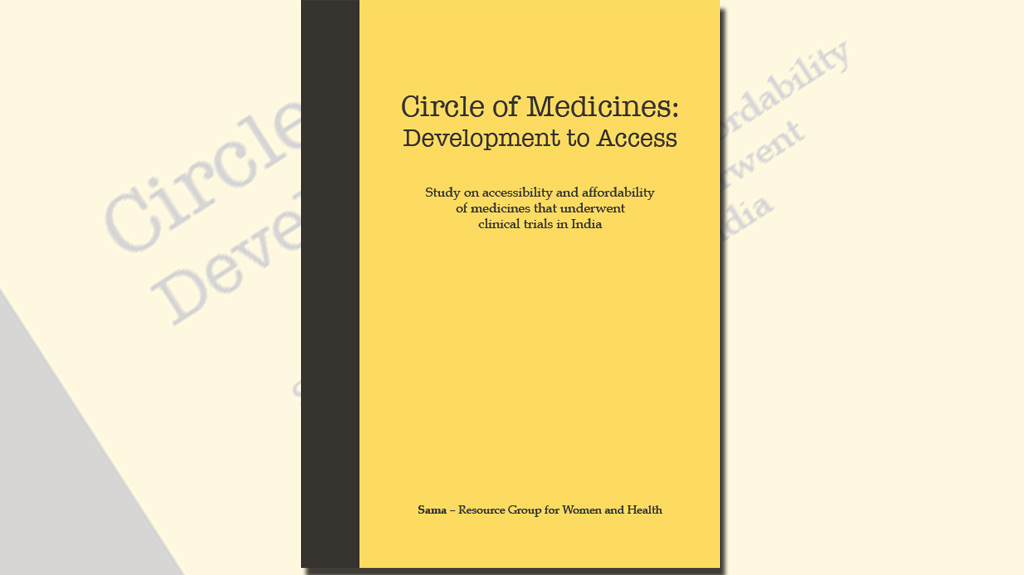 2016 | Sama
2016 | Sama
This research report is based on a study conducted by Sama during 2015-2016 to assess the accessibility and affordability of drugs for which clinical trials were conducted on the Indian population. The study tried to explore key issues on – a) Are the drugs for which trials were conducted on Indian population from 2005 to 2010 available in India where the trials were conducted. b) If marketed, are they available at affordable prices.
The rationale to explore access to drugs, whose trials were conducted in India, emerges from the work of Sama over the past few years on various ethical and regulatory issues within the realm of clinical trials. The previous work by Sama on perspectives of clinical trial participants, found that when the drug was benefitting the participants, the participants were concerned about the availability and affordability of the drug after the trial period. Often the drug tested in the country is not necessarily marketed in that country and in cases where it is marketed; its price can be prohibitively high, thus becoming unaffordable and inaccessible to most of the population in that country.
The study examined the drugs for which clinical trials were conducted on the Indian population from the period of 2005 to 2010. This period was chosen for the study, as India’s regulatory laws were amended substantially in 2005, along with the patent law making India TRIPS compliant. Also a period of 5 years was chosen, as the drugs that were tried during that time, should have entered the market in India by then (considering a drug takes around 3-4 years to launch after phase III trials), and so an analysis can be made on their accessibility and affordability. The clinical trial registry of India (CTRI), and US trial registry were used to source out data on the clinical trials. The reason for choosing phase III clinical trials is attributed to the objective of the study to explore accessibility and affordability of drugs and since drugs can only be approved after phase III clinical trials (excluding the exceptional case of waiver by DCGI). Information for a total of 657 phase III clinical trials (resulting from 307 drugs) was captured and analyzed. Following this for the 307 drugs, market approval, pricing and sales data of the drugs were captured.
Circle of medicines report brought to the forefront many interesting dimensions such as, the increase in registration of clinical trials after becoming mandatory, the kind of trials and the type of trials conducted in India, the profile of the participants, the types of drugs on which clinical trials take place in India, the relevance of the drugs for India, the primary and secondary sponsors, the prices of the drugs that got approval and were launched in India, the price of the drug affordable in India, and the link between pricing, patents and people’s access to medicines. The data also reveals the rampant use of placebo control trials and approvals being given for Phase III clinical trials with less than 100 participants, pursuant to which approval for drugs are also being given. The study, in a way, analyses the granting process for clinical trials and drugs in India, and analyses the pricing and affordability of the drugs for which clinical trials have taken place in India.



